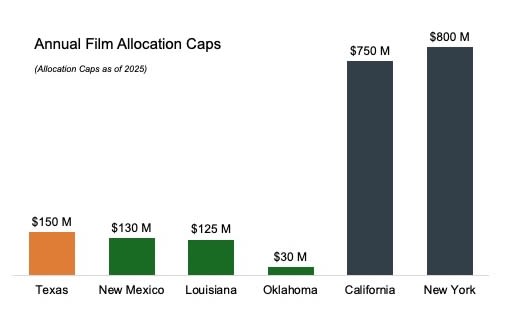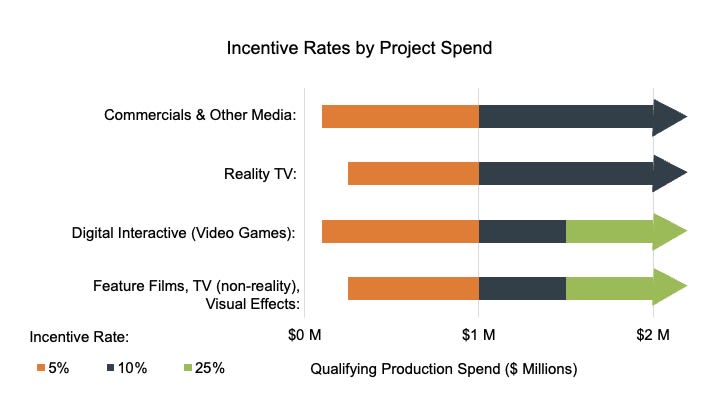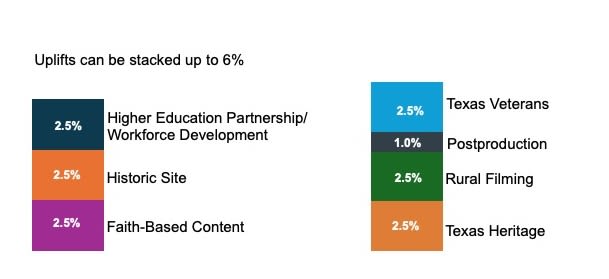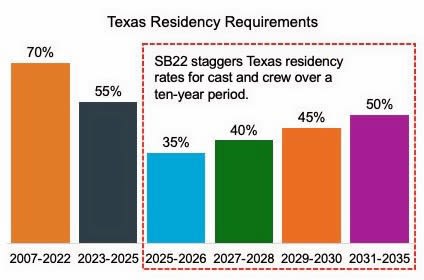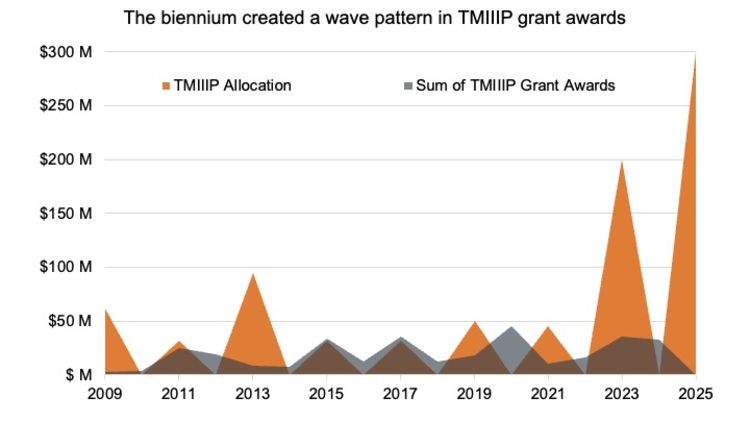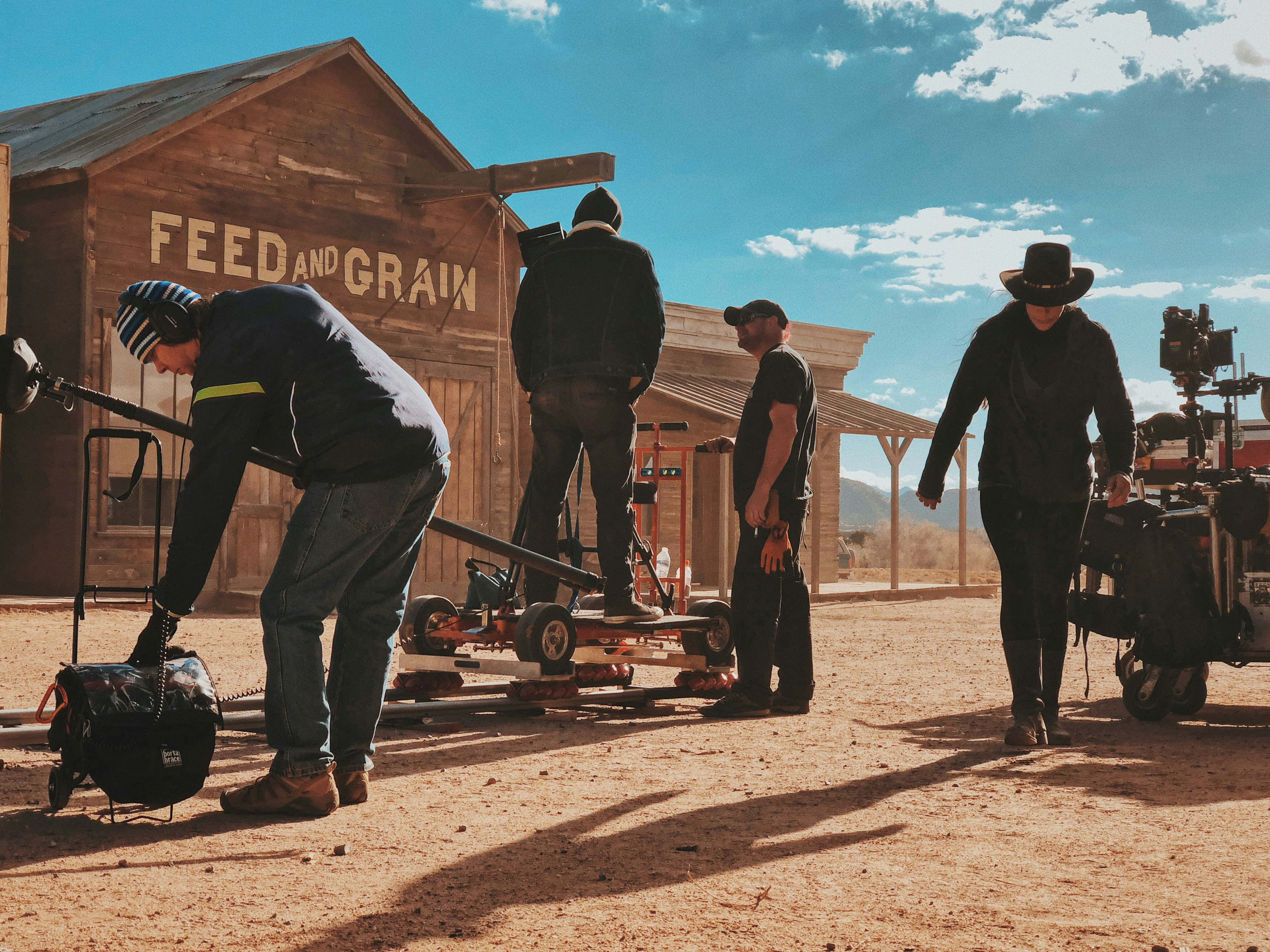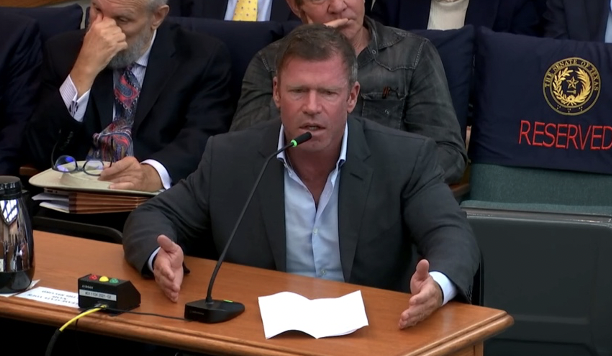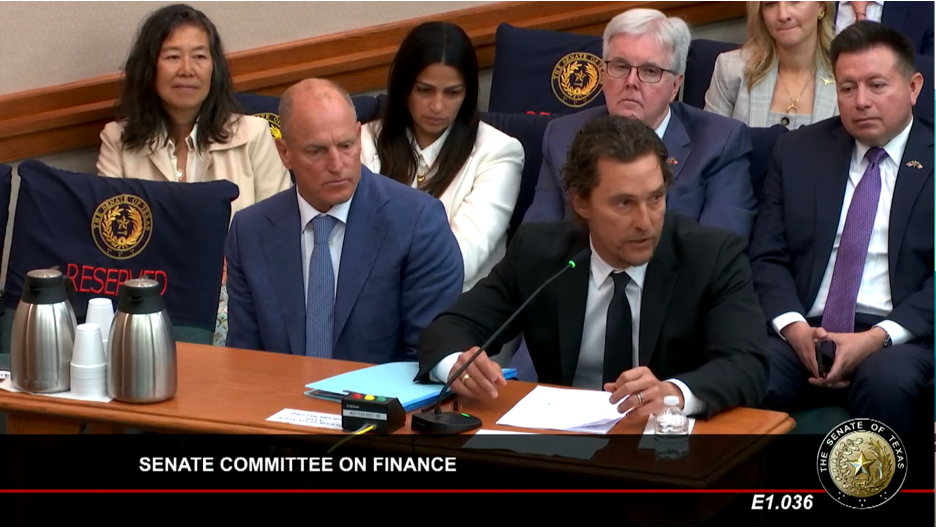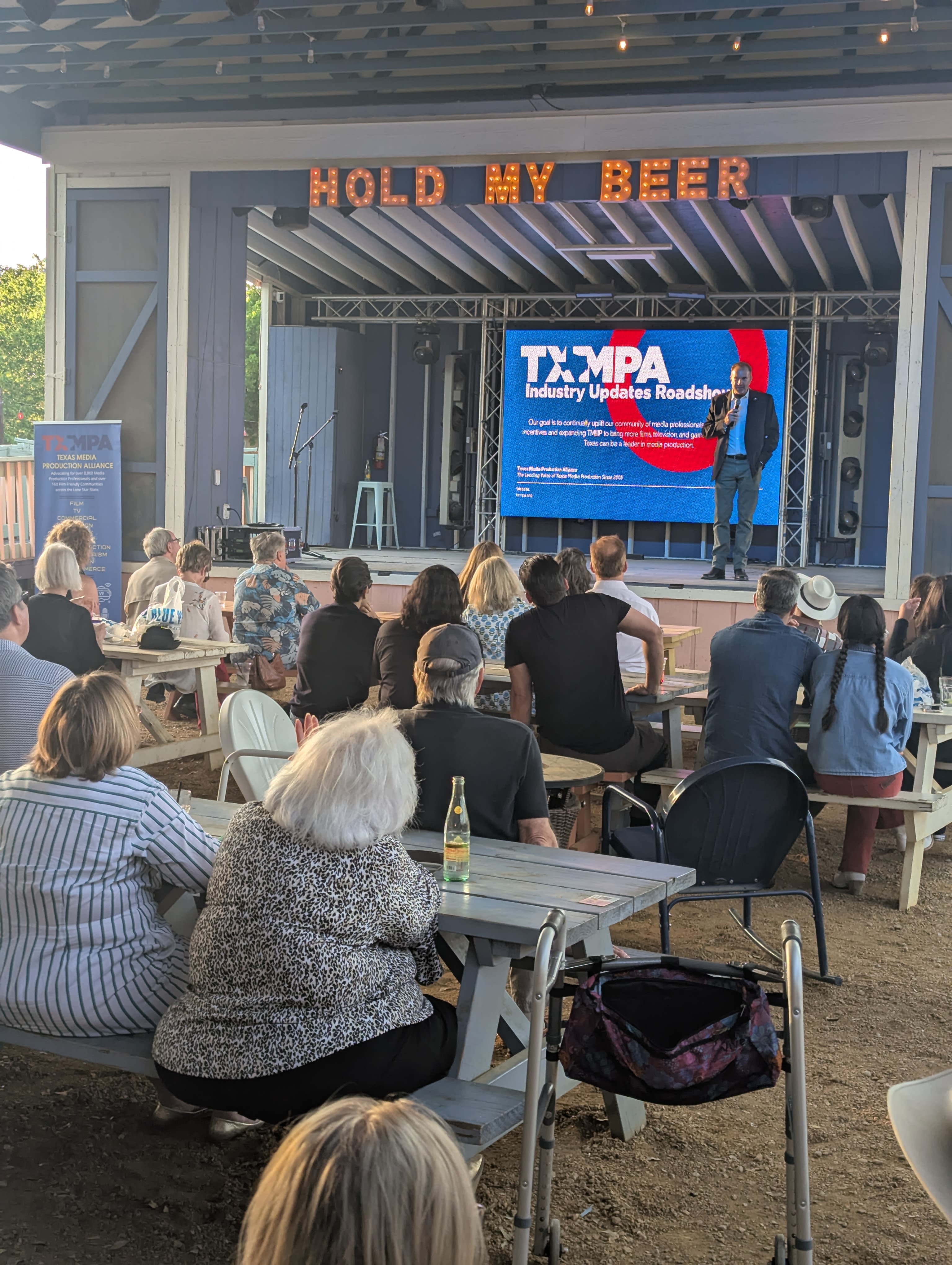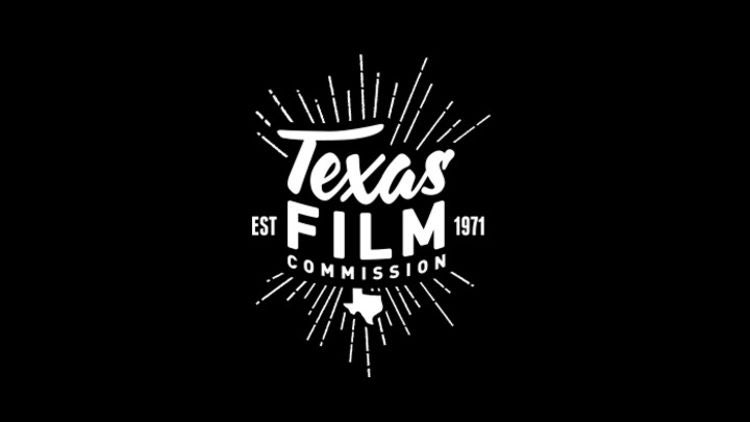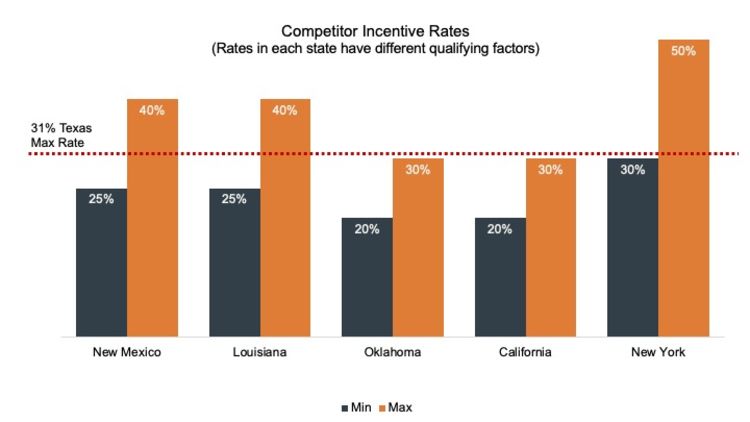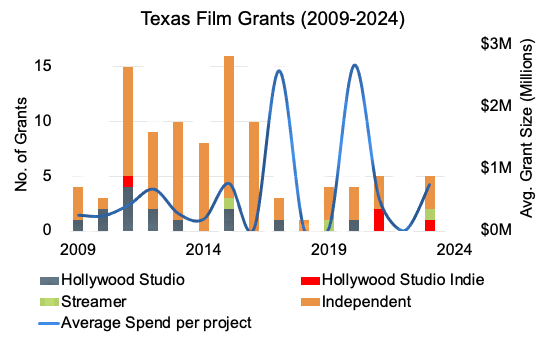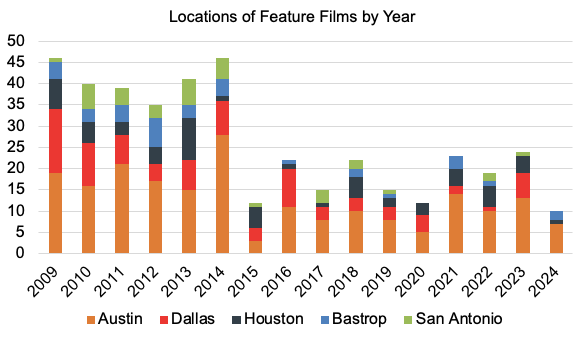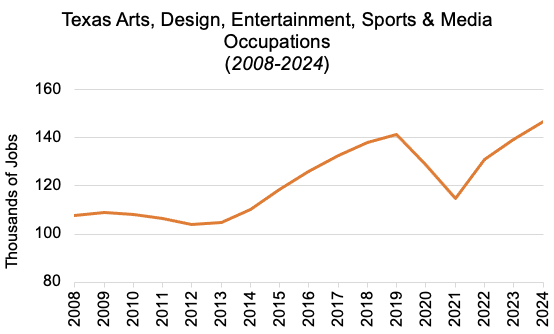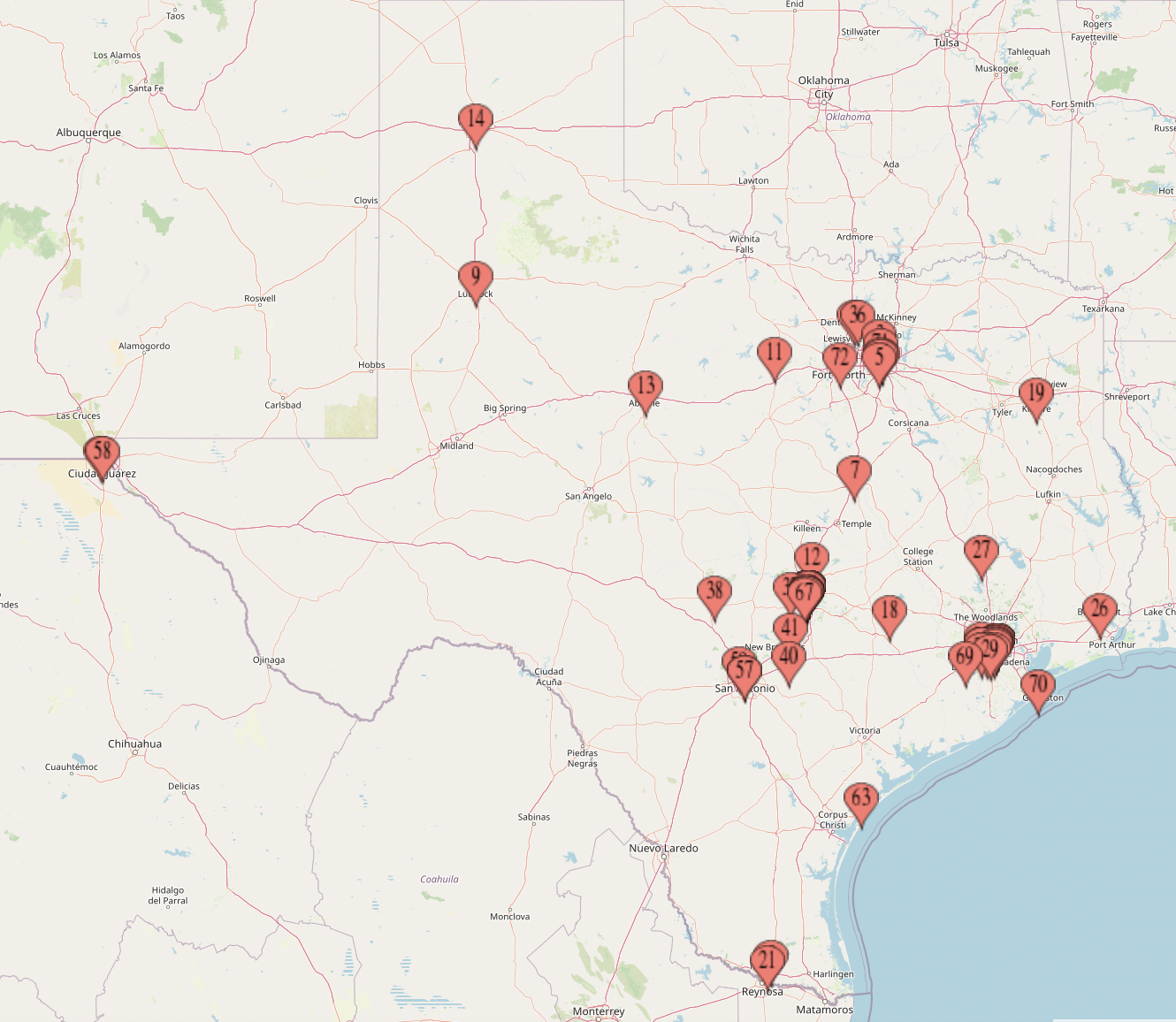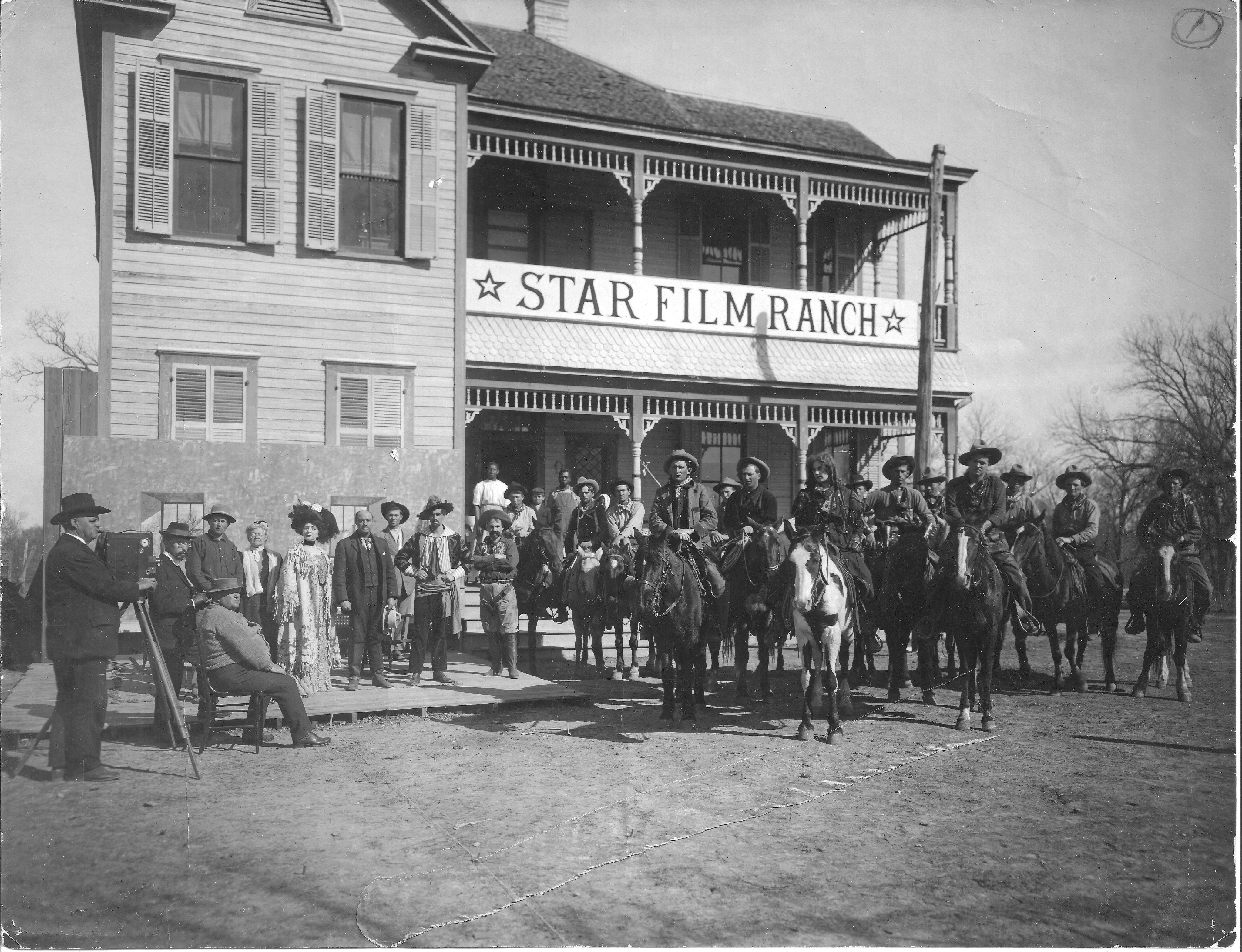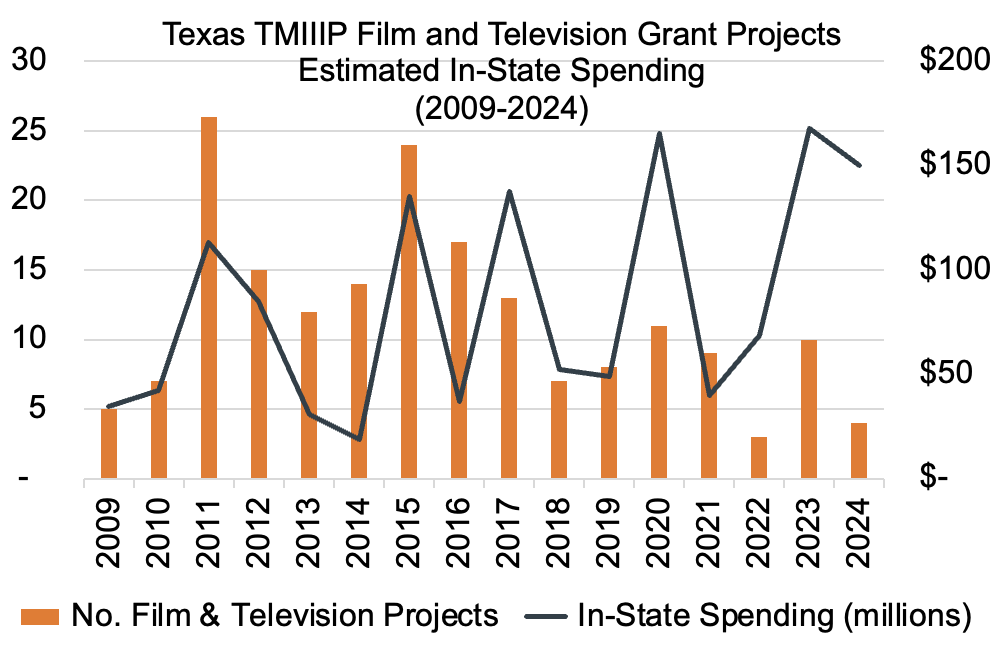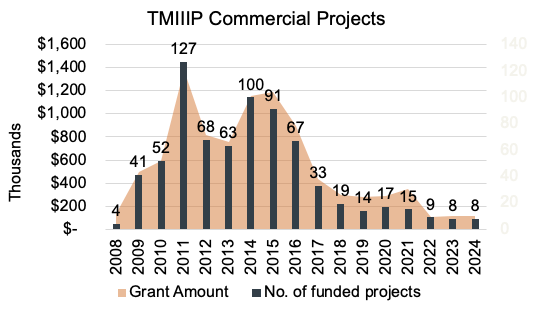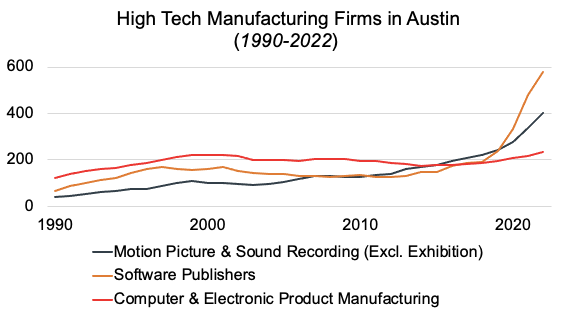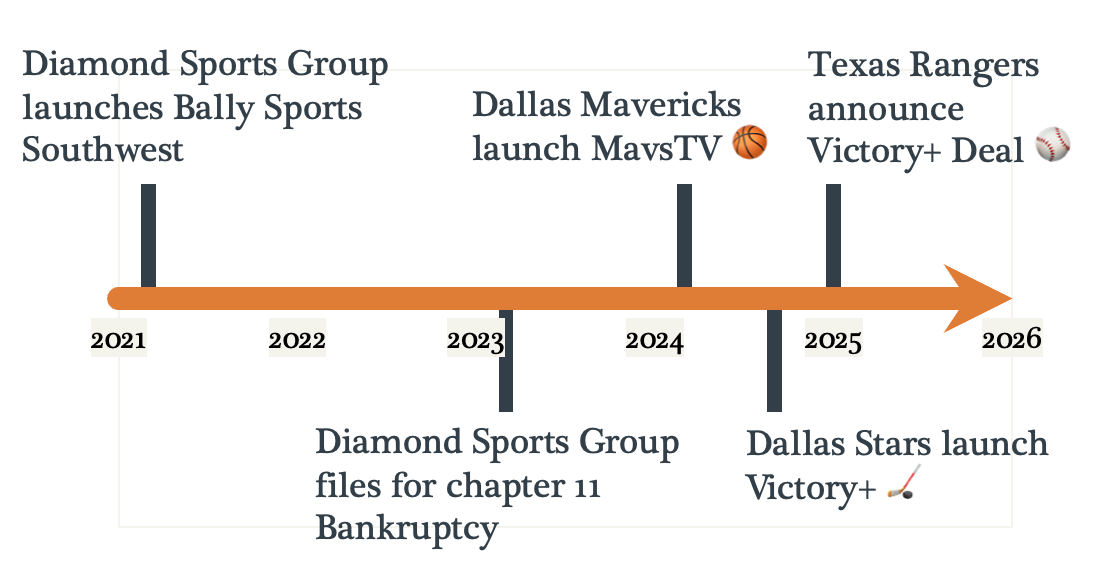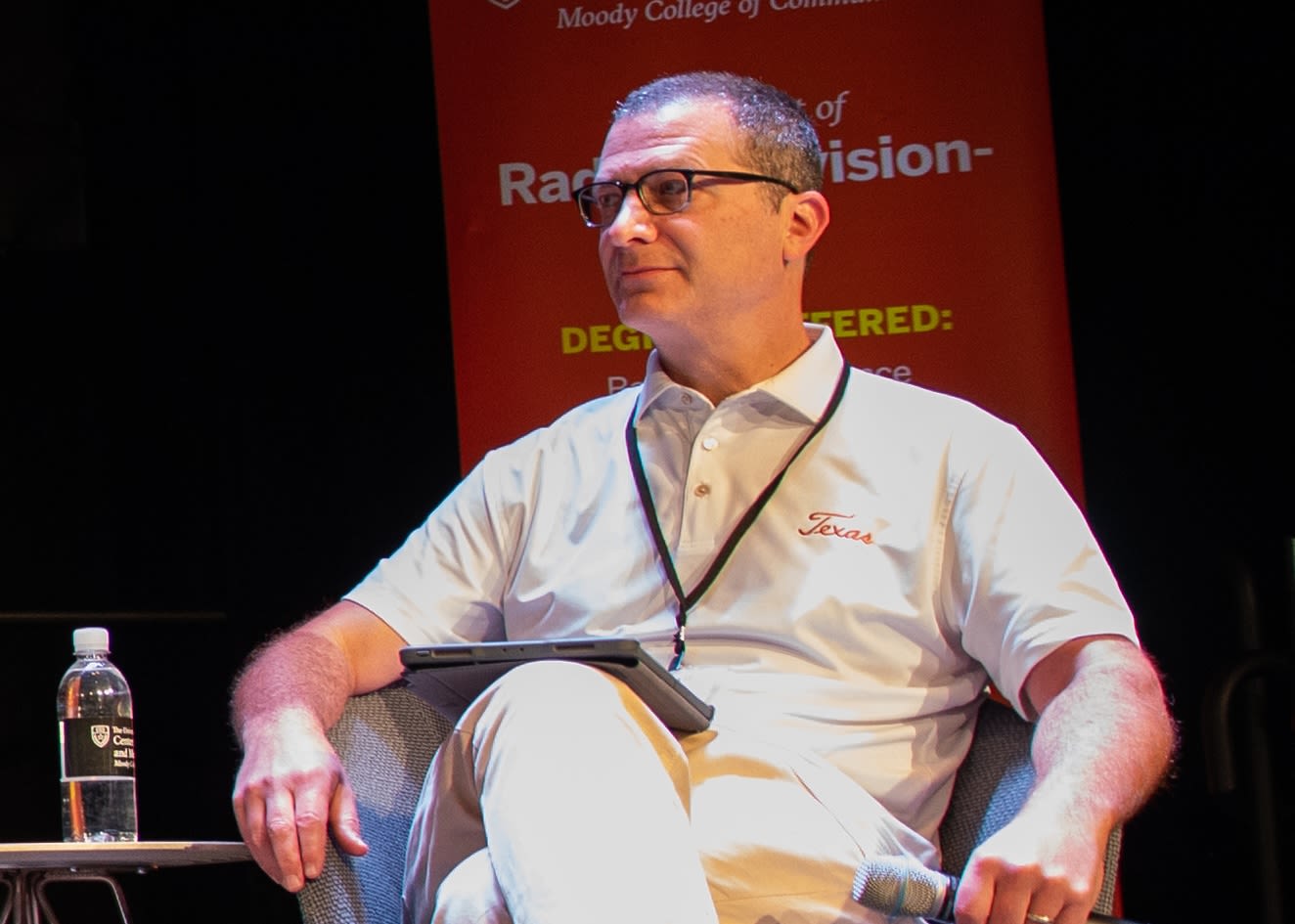
It’s an exciting time for the Texas media industries. On September 1, 2025, SB22 – an act designed to provide greater financial assistance and stability for film, television, commercials, and digital interactive media – went into effect. With $1.5 billion in total directed toward supporting moving image production over a ten-year time span ($300 million per biennium), SB22 represents the most significant commitment by the state yet to grow its international media presence and local infrastructure. As much as SB22 was designed to boost tourism and fuel business across the state, it also sought to center both more and different types of depictions of Texas onscreen.
As speculation ramps up regarding SB22’s potentially wide-ranging impact on businesses, workers, and content, the time seems right to pause and assess the Texas media industries’ past, present, and future. This report offers comprehensive coverage of the new legislation as well as an expansive collection of articles on Texas media. Through this, we aim to provide readers with a roadmap for understanding what may be a transformative time for the Texas media industries. Our team of researchers, including more than a dozen faculty members and graduate students from the Radio-Television-Film Department at The University of Texas at Austin (and beyond!), are thrilled to present you with this in-depth report that represents the culmination of over a year of research.
Photo by Dan Dennis on Unsplash
Photo by Dan Dennis on Unsplash
Alisa Perren, Project Lead
Hannah Wold, Project Co-Lead and Design Lead
Kathryn Hartzell, Managing Editor and Data Visualization, Graphics, and Website Editor
Peter Arne Johnson, Research Assistant
Photo by Shannia Christanty on Unsplash
Photo by Shannia Christanty on Unsplash
Table of Contents
A New Era for the Texas Moving Image Industries?
by Alisa Perren
State Incentives: Legislation and Prospective Outcomes
by Hannah Wold
Incentives, Commissions, and Hollywood Production Mobility
by Cale Epps
by Ryan David Briggs
Creative Communities: Texas Television Production and Local Crew
by Ann Laudick
Bigger in Texas: The Rise of Practical Training Programs for Aspiring Film Workers
by Casey Walker
Film Friendly: The Regional Race for Media Production
by Hannah Wold
San Antonio’s Star Films: A Silent Era Industry
by Kathy Fuller-Seeley
A Production Boomtown: The Impact of 101 Studios on Fort Worth
by Tricia Jenkins and Kimberly A. Owczarski
Selling Dallas: Neiman Marcus and the Image of a Texas City
by Alex Remington
Silicon Hills: A Brief History of the Central Texas High-Tech Industry
by Peter Arne Johnson
Bringing Sports Streaming to Texas: Victory+ and the Future of Regional Sports Networks
by Yenny Kang
Reflections on the Evolution of Austin as a Media Hub
by Jordan Levin
Increased Allocation
The increase in Texas’ annual allocation cap to $300 million per biennium (averaging $150 million per year) brings Texas ahead of its regional neighbors.
Increased Incentive Rate
SB22 increased the base incentive for budgets over $1.5 million in film, television, and video games to 25% (up 5%). Additional uplifts for specific criteria (see page 21) create an effective incentive rate of 31% (up 8.5%). The incentive rate applies to qualified Texas expenses.
Changes to Incentive Rate Uplifts
Texas’ “effective incentive rate” rose to a maximum of 31% from 22.5%. Projects qualifying for a base rate of 25% can stack up to 6% in uplifts. Lower-budgeted projects at different incentive rates can also stack multiple uplifts. These uplifts encourage shooting in certain Texas locations, producing faith-based and family values media, and growing jobs for students, early career professionals, and veterans.
Reduced Residency Requirements
SB22 reduced the Texas residency requirement to 35% for 2025 and 2026. This followed an earlier decrease to 55% in 2023 and 2024. As SB22 encourages increased crew depth with their incentive uplifts, residency requirements are set to rise every two years.
Increased Stability & Longevity
SB22 extends film incentives for a ten-year span and establishes the Texas Treasury Safekeeping Trust Company. These measures ensure stable funding through a longer period rather than relying on the traditional Texas appropriations process. This reassures investors and producers working on longer-term projects.
Photo by Chris Murray on Unsplash
Photo by Chris Murray on Unsplash
TMIIIP Review Process
Continuing prior TMIIIP practices, SB22 includes a review process, during which the Texas Film Commission ensures the project qualifies. This legislative session included robust discussion on the rigor of this process.
From Idea to Implementation:
SB22 and the Road to the Capitol
September 10, 2024
Lieutenant Governor Dan Patrick issues interim charge for the Senate Finance Committee to review TMIIIP.
October 9, 2024
Special hearing of the Senate Finance Committee, with witnesses testifying on behalf of TMIIIP including writer and director Taylor Sheridan, actor Dennis Quaid, and businessman Ross Perot Jr.
January 29, 2025
Lt. Governor announces his top 25 bill priorities for the legislative session. Senate Bill 22 is titled Establishing Texas as America’s Film Capital.
February 2, 2025
State of the State Address: Governor Greg Abbott commends a student whose education in welding led to a job on Taylor Sheridan’s TV series, Yellowstone.
March 11, 2025
SB22 is filed the night before The Texas Film Experience at the Capitol.
March 11, 2025
SB22 is filed the night before The Texas Film Experience at the Capitol.
March 12, 2025
Lobbying group Media for Texas hosts The Texas Film Experience on the grounds of the Capitol that highlights the breadth of work and skills of those working in the Texas media industries.
March 31, 2025
The Senate Finance Committee holds a hearing on SB22. Witnesses speaking in favor include actors Matthew McConaughey and Woody Harrelson, producer of The Chosen Chad Gunderson, and Fort Worth Mayor Mattie Parker. The bill passes and is sent to the Senate floor.
April 16, 2025
SB22 is brought to the Senate floor, with an amendment to introduce a 2.5% uplift for faith-based media. The bill passes with 23 Yeas and 8 Nays.
April 28, 2025
The House Committee on Culture, Recreation, and Tourism hears testimony. Witnesses for the bill again include Matthew McConaughey and Woody Harrelson, along with leaders in faith-based media, and the president of Texas Hotel and Lodging Association.
April 28, 2025
The House Committee on Culture, Recreation, and Tourism passes HB 4568 (the identical House version of SB22).
May 25, 2025
SB22/ HB4568 passes the Texas Legislature
HB4568 is heard on the House floor. Three amendments are approved, bringing down the proposed allocation of $500 million to $300 million, adding an uplift of 2.5% for projects featuring a Texas historic site, and introducing an uplift of 2.5% for productions working with higher education to improve workforce development.
June 22, 2025 at 11:31PM
Half an hour before the session deadline, SB22/HB4568 is filed without signature by Governor Abbott, becoming law. The new law now moves to the Texas Film Commission for implementation.
Taylor Sheridan gives testimony to the Texas Senate Finance Committee on October 9, 2024.
Taylor Sheridan gives testimony to the Texas Senate Finance Committee on October 9, 2024.
Photo by Mitchell Kmetz on Unsplash
Photo by Mitchell Kmetz on Unsplash
Matthew McConaughey and Woody Harrelson give testimony to the Texas House Finance Committee
Matthew McConaughey and Woody Harrelson give testimony to the Texas House Finance Committee
Fred Poston, Executive Director of the Texas Media Production Alliance (TXMPA), speaking on one of the stops of their spring 2025 roadshow, a tour around Texas to inform local communities about the benefits of the then-pending legislation.
Fred Poston, Executive Director of the Texas Media Production Alliance (TXMPA), speaking on one of the stops of their spring 2025 roadshow, a tour around Texas to inform local communities about the benefits of the then-pending legislation.
Texas Film Commission
Texas Film Commission
A Closer Look
at Texas Media
Incentives and Media Work
Texas Competitor Incentive Rates as of 2025 (see page 20 of the report for additional details)
Texas Competitor Incentive Rates as of 2025 (see page 20 of the report for additional details)
Cale Epps, University of Southern California, compares Texas and Arizona's attempts to "woo" Hollywood production dollars.
Texas Film Grants from 2009-2024. Source: TMIIIP Grant Report 2008-2024
Texas Film Grants from 2009-2024
Ryan David Briggs, The University of Texas at Austin, discusses the evolution of Austin's indie film scene and the organizations that support low-budget, local filmmaking.
Top five cities for filming in Texas (2009-2024). Source: 2024 Texas Film Commission
Top five cities for filming in Texas (2009-2024). Source: 2024 Texas Film Commission
Ann Laudick, The University of Texas at Austin, discusses the challenges and opportunities of building crew-depth in Texas.
Texas Arts, Design, Entertainment, Sports & Media Occupations. Source: Occupational Employment and Wage Statistics (estimated) from the Bureau of Labor Statistics
Texas Arts, Design, Entertainment, Sports & Media Occupations. Source: Occupational Employment and Wage Statistics (estimated) from the Bureau of Labor Statistics
Casey Walker, The University of Texas at Austin, describes the types of filmmaking courses that are increasingly being offered by a varied group of higher-education institutions.
Top five cities for filming in Texas (2009-2024). Source: 2024 Texas Film Commission
Top five cities for filming in Texas (2009-2024). Source: 2024 Texas Film Commission
Hannah Wold, research report co-lead, highlights how regional film commissions within Texas both collaborate and differentiate geographic areas, infrastructures, and other resources under their purview.
The above map reflects the locations of 78 Texas-based film festivals. Due to the itinerant nature of film festivals, there may be more that are not accounted for here.
The above map reflects the locations of 78 Texas-based film festivals. Due to the itinerant nature of film festivals, there may be more that are not accounted for here.
Hannah Wold also details Texas' thriving festival scene. There are at least 78 festivals happening every year!
A Closer Look
at Texas Media
How "Texas" Shapes Local Media Industries
Source: Star Film Ranch House. Francis Ford Collection
Source: Star Film Ranch House. Francis Ford Collection
Kathy Fuller-Seeley, The University of Texas at Austin, looks back at San Antonio's silent era film productions and Gaston Méliès' Star Film Company (1910-1911).
Source: TMIIIP Grant Report 2009-2024
Texas Film Grants from 2009-2024
Tricia Jenkins and Kimberly A. Owczarski, Texas Christian University, discuss how production growth in the Fort Worth area are expanding the local economy.
Advertisements are classified as commercial projects by TMIIIP 2009-2024: Source: TMIIIP Grant Report 2008-2009.
Advertisements are classified as commercial projects by TMIIIP 2009-2024: Source: TMIIIP Grant Report 2008-2009.
Alex Remington, The University of Texas at Austin, describes how luxury retailer Neiman Marcus historically shaped the national image of Dallas and drove spectacular media production in advertising, film, and television.
Peter Arne Johnson, University of Miami, discusses how the state of Texas, through its venture-capital interests, helped develop Austin's "Silicon Hills" into a thriving tech hub. With the convergence of media and tech, Silicon Hill's development suggests possible paths for the future of production in Texas.
Timeline of the rise of regional sports streaming services in Texas
Timeline of the rise of regional sports streaming services in Texas
Yenny Kang, The University of Texas at Austin, describes how Texas sports franchises both have increasingly vertically integrated to become media producers and are investing in new regional sports streaming services.
Jordan Levin on a panel at the Texas Media and Entertainment Industries Symposium in 2024.
Jordan Levin on a panel at the Texas Media and Entertainment Industries Symposium in 2024.
Industry professional and instructor Jordan Levin reflects on how the Texas media industries have changed from his time as a student in the 1980s, through his work as a media executive in Hollywood in the 1990s through the late 2010s, and concludes by offering advice at the beginning of this new era for film incentives.
Special Thanks
This report would not have been possible to produce without support from the leadership and staff of the Radio-Television-Film Department and Moody College of Communication, as well as donors to the Center for Entertainment and Media Industries.






